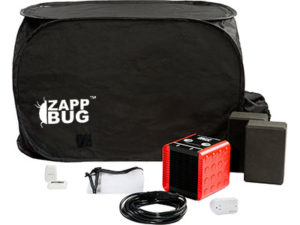Bed bugs aren’t just a problem for your home mattress—they can invade your car too! These persistent pests can hitch a ride in your vehicle from hotels, infested homes, or used furniture. Once they’re in your car, they can bite you during your commute and even migrate into your home, creating a much larger infestation. This guide will show you how to identify, eliminate, and prevent bed bugs in your vehicle with four straightforward steps.
- Can Bed Bugs Really Live in Your Car?
- 4 Easy Steps to Eliminate Bed Bugs from Your Car
- Effective Treatment Methods for Car Bed Bug Infestations
- The Most Effective Approach: Combining Methods
- Preventing Future Bed Bug Infestations in Your Car
- Conclusion: Act Fast for Best Results
- Frequently Asked Questions
Can Bed Bugs Really Live in Your Car?
When most people think of bed bugs, they imagine mattresses and bedding. However, these persistent pests can survive in many environments, including your vehicle. Bed bugs are attracted to body heat and carbon dioxide (your breath), making a frequently-used car an attractive habitat.
Bed bugs can survive in your car for up to six months, especially if the vehicle is used regularly. They hide in cracks, crevices, upholstery seams, and under floor mats—anywhere dark and undisturbed.
You might introduce bed bugs into your car by:
- Transporting infested luggage from hotels or motels
- Carrying them on clothing from an infested location
- Bringing second-hand furniture or items in your vehicle
- Spreading from an existing home infestation
The good news is that with prompt action and the right approach, you can eliminate bed bugs from your vehicle before they spread to your home. To successfully tackle this issue, it’s important to focus not only on the adult bed bugs but also on how to eliminate bed bug eggs, which can easily be overlooked. Vacuuming the seats, carpets, and any crevices in your vehicle is a crucial first step, ensuring you capture as many pests and their eggs as possible. Additionally, utilizing heat treatment or steam cleaning can effectively kill both bugs and eggs, providing a thorough solution to your bed bug problem. It’s equally important to educate yourself on how to identify bed bugs, as recognizing the signs of an infestation early can save you time and effort. Look for small, reddish-brown insects or tiny black spots on surfaces, which are telltale signs of their presence. Regularly inspecting your vehicle, particularly after traveling, can help catch any potential issues before they become a larger problem.
4 Easy Steps to Eliminate Bed Bugs from Your Car
When dealing with bed bugs in your car, it’s crucial to act quickly and thoroughly. Here’s a comprehensive approach to tackle the problem:
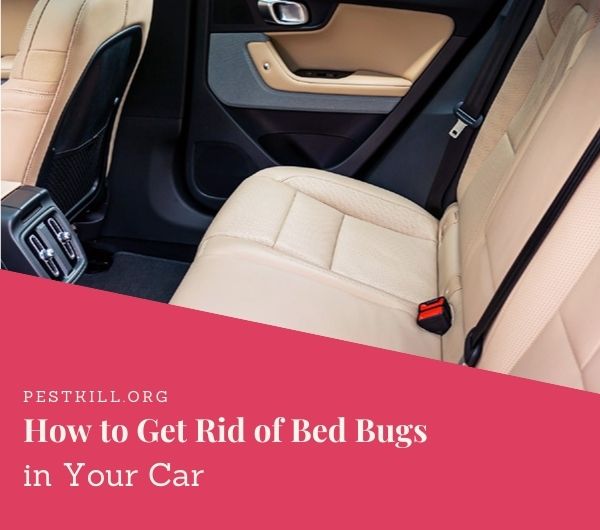
Step 1: Inspect Your Car Thoroughly

Using a high-intensity LED flashlight, carefully examine all areas of your car’s interior. Pay special attention to:
- Seams in seats and upholstery
- Cracks in the dashboard and center console
- Under and between floor mats
- Door pockets and storage compartments
- Trunk area and cargo spaces
Look for live bugs (reddish-brown, apple seed-sized insects), shed skins, tiny black fecal spots, or small white eggs.
Step 2: Remove and Clean All Removable Items
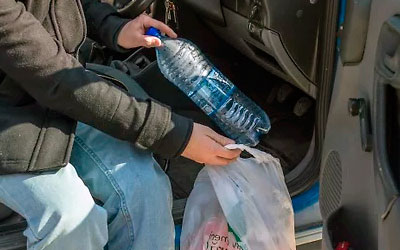
Take out everything that doesn’t belong in your car:
- All personal belongings
- Floor mats and seat covers
- Trash and debris
- Child car seats (if applicable)
Isolate these items in sealed plastic bags until you can treat them separately.
Step 3: Clean Your Car Thoroughly
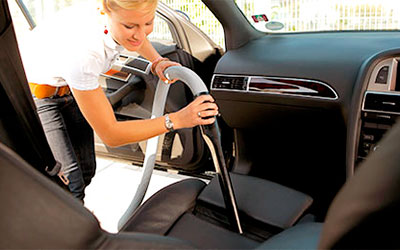
A multi-pronged cleaning approach works best:
- Vacuum extensively using a HEPA filter vacuum
- Steam clean upholstery and carpets (140°F or higher)
- Use bed bug-specific products in cracks and crevices
- Consider using natural repellents like tea tree oil, lavender, lemon, or eucalyptus
Properly dispose of vacuum contents in a sealed bag outside your home.
Step 4: Prevent Re-infestation

Take precautions to keep bugs from migrating from your car to your home:
- Change clothes before entering your home if possible
- Place belongings in sealed plastic bags
- Treat or heat high-risk items before bringing them inside
- Use monitoring traps to detect any surviving bugs
Regular inspections will help ensure the treatment was successful.
Effective Treatment Methods for Car Bed Bug Infestations
Depending on the severity of the infestation and your preferences, you can choose from several treatment methods—or combine them for better results:
Heat Treatment
Heat is one of the most effective ways to kill bed bugs at all life stages. When temperatures reach 120°F (49°C), bed bugs will die within minutes.
| Heat Method | How to Use | Effectiveness |
|---|---|---|
| Natural sunlight |
|
Moderate to high (weather-dependent) |
| Portable heater units |
|
Very high (consistent results) |
| Car interior heat |
|
Moderate (climate-dependent and may not reach all areas) |
ZappBug Heater
Best Heat TreatmentHow Does It Work
How to Use
- Place removable car items like floor mats, seat covers, and personal belongings inside the ZappBug chamber
- Zip the unit closed and plug it in to start the heating process
- Allow items to heat for the recommended time (typically 4 hours)
- Once complete, your items will be bed bug free and ready to return to your car
- Kills 100% of bed bugs and eggs when used properly
- Non-toxic, chemical-free treatment method
- Portable and easy to store when not in use
- Can be used for multiple purposes beyond car treatment
- Cannot treat the entire car at once
- Requires electricity to operate
- More expensive than some other treatment options
Vacuum Cleaning
A thorough vacuum cleaning can physically remove many bed bugs and their eggs from your car’s interior, though it works best as part of a comprehensive approach.

Effective Vacuum Cleaning Tips
- Use a vacuum with a HEPA filter to prevent bugs from escaping
- Focus on cracks, crevices, and seams where bugs hide
- Use crevice tools to reach difficult areas
- Empty vacuum contents into a sealed plastic bag and dispose outside immediately
- Clean or discard the vacuum filter after use
For best results, combine vacuuming with steam cleaning. Professional steam cleaners that reach temperatures of at least 140°F can kill bed bugs on contact while cleaning upholstery and carpets.
Chemical Treatments
When used correctly, certain chemical products can be effective against bed bugs in vehicles:
Bed Bug Powders
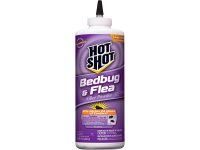
- Works by dehydrating bed bugs on contact
- Can be applied to cracks and crevices
- Provides residual protection
- Diatomaceous earth is a natural option
Bed Bug Sprays
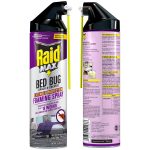
- Kills bugs on contact
- Easier to apply in hard-to-reach areas
- Some formulas provide residual protection
- Available in both chemical and natural options
Bed Bug Traps
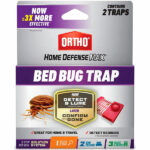
- Monitors for bed bug presence
- Helps confirm treatment success
- Can catch stragglers after treatment
- Non-toxic monitoring option
Important Safety Note
Chemical treatments can be effective, but they are potentially hazardous to children and pets. If you regularly have children and pets in your vehicle, use chemical treatments as a last resort or ensure proper ventilation and safety measures. Always read and follow product instructions carefully.
The Most Effective Approach: Combining Methods
There is no one-size-fits-all solution for eliminating bed bugs from your car. The most effective approach typically combines multiple methods:
- Start with thorough vacuuming to remove as many visible bugs as possible
- Apply heat treatment to removable items like floor mats and seat covers
- Use targeted chemical treatments in cracks and crevices where bugs might hide
- Follow up with monitoring to ensure all bugs have been eliminated
After treatment, place monitoring traps in your car to catch any survivors. If you continue to find evidence of bed bugs after treatment, consider consulting a professional exterminator with experience in vehicle treatment.
Preventing Future Bed Bug Infestations in Your Car
Once you’ve successfully eliminated bed bugs from your vehicle, take these precautions to prevent re-infestation:
While Traveling
Inspect hotel rooms before bringing luggage inside
Keep luggage elevated on racks, not on the floor
Check used furniture for signs of bugs before transport
Use luggage liners or protective covers
Regular Maintenance
Vacuum your car regularly, especially after trips
Remove clutter that provides hiding places
Consider periodic steam cleaning
Place monitoring traps as an early warning system
If You Have Home Infestation
Treat your home and car simultaneously
Change clothes before entering your car
Heat-treat items before bringing them into the car
Consider professional treatment for both locations
Conclusion: Act Fast for Best Results
Bed bugs in your car can be disturbing and uncomfortable, but with prompt action and the right approach, you can eliminate them completely. The key is to act quickly before they multiply and potentially spread to your home.
By following the four-step process outlined in this guide—thorough inspection, removing items, comprehensive cleaning, and preventing re-infestation—you can reclaim your vehicle from these persistent pests. Remember that combining methods typically yields the best results, and follow-up monitoring ensures your treatment success.
The faster you address a bed bug problem in your car, the easier it will be to resolve—and the less likely you’ll need to repeat the treatment process in the future!
Frequently Asked Questions
How long can bed bugs survive in a car?
Bed bugs can survive in a car for up to six months under favorable conditions. Temperature plays a significant role in their survival—they thrive in temperatures between 70-80°F but can withstand much colder or hotter temperatures for short periods. In an actively used car, where they have access to regular blood meals from passengers, they can establish a breeding population quickly. Even in unused vehicles, they can enter a semi-dormant state and survive for extended periods without feeding.
Can bed bugs survive in a hot car during summer?
Bed bugs are sensitive to extreme heat, and temperatures above 120°F will kill them within minutes. During hot summer days, car interiors can reach 130-170°F when parked in direct sunlight with windows closed, which is sufficient to kill bed bugs. However, this method isn’t completely reliable because the bugs may find cooler spots deep within seats or under carpeting where temperatures remain lower. For this method to work effectively, interior car temperatures need to remain above 120°F for at least 90 minutes to reach all hiding places.
How do I know if I have bed bugs in my car?
Signs of bed bugs in your car include small rust-colored stains on seats (from crushed bugs or their droppings), tiny white eggs or eggshells (about 1mm in size) in seams and crevices, shed skins as nymphs grow, live bugs visible in cracks and seams (reddish-brown, apple seed-sized insects), and unexplained itchy welts on your skin after driving or sitting in your car. You might also notice a sweet, musty odor similar to berries or almonds when infestations are severe.
Will a car wash kill bed bugs?
A standard car wash will not kill bed bugs in your vehicle. While the exterior cleaning might remove any bugs clinging to the outside, bed bugs primarily hide in the interior—in seat seams, floor mats, trunk areas, and cracks in upholstery—areas that regular car washes don’t treat. Even interior detailing services typically don’t reach the temperatures needed (120°F) to kill bed bugs or use specialized treatments effective against these pests. A comprehensive approach including heat treatment, vacuuming with HEPA filters, and possibly chemical treatments is necessary.
Can I use a fogger or bug bomb to treat bed bugs in my car?
Foggers and bug bombs are generally not recommended for treating bed bugs in vehicles. These products rarely reach the cracks and crevices where bed bugs hide, and may just drive them deeper into upholstery or other hiding spots. Additionally, the chemicals in foggers can leave residues on surfaces you touch and breathe, potentially creating health hazards in the enclosed space of a vehicle. More effective options include direct application of bed bug-specific products to hiding spots, heat treatment of removable items, and thorough vacuuming with a HEPA filter vacuum.
